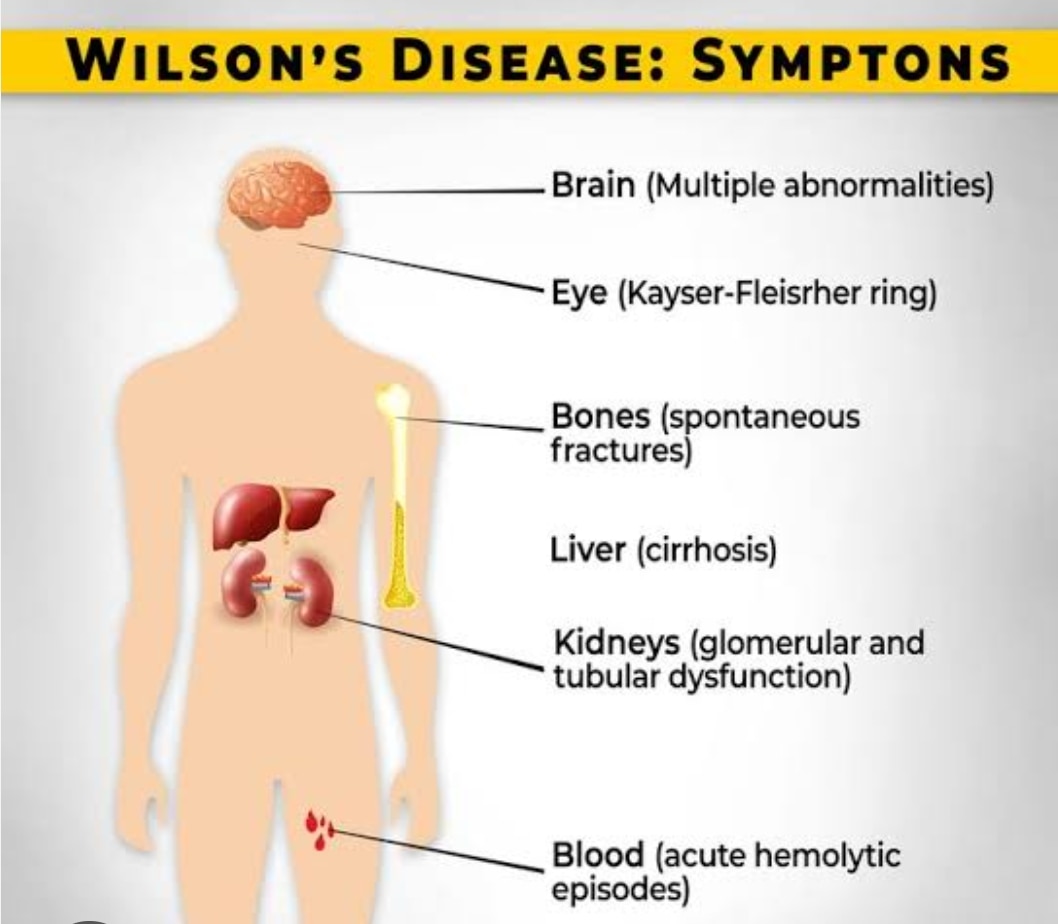+918048034404

This is your website preview.
Currently it only shows your basic business info. Start adding relevant business details such as description, images and products or services to gain your customers attention by using Boost 360 android app / iOS App / web portal.
Description
Wilson Disease: A Rare but Treatable Genetic Liver Disorder Wilson Disease (WD) is a rare autosomal recessive disorder caused by mutations in the ATP7B gene, leading to defective copper metabolism. This results in excess copper accumulation in the liver, brain, eyes, and other organs, causing progressive organ damage. If left untreated, Wilson Disease can lead to liver failure, neurological impairment, and even death. Pathophysiology & Disease Progression In a healthy individual, excess dietary copper is excreted through bile. However, in Wilson Disease, the copper-transporting ATPase (ATP7B) in hepatocytes fails to function properly, leading to: ✔️ Copper accumulation in the liver → Causes inflammation, fibrosis, cirrhosis, and acute liver failure. ✔️ Copper release into the bloodstream → Deposits in the brain, causing movement disorders, psychiatric symptoms, and cognitive decline. ✔️ Kayser-Fleischer (KF) Rings → Copper deposition in the cornea, a hallmark feature of WD. Clinical Features of Wilson Disease 🟠 Hepatic Symptoms: Chronic hepatitis, cirrhosis, acute liver failure (ALF), hepatosplenomegaly. 🟠 Neurological Symptoms: Tremors, dystonia, dysarthria, ataxia, parkinsonism-like features. 🟠 Psychiatric Symptoms: Depression, anxiety, personality changes, cognitive impairment. 🟠 Ophthalmologic Signs: Kayser-Fleischer rings (copper deposits in the cornea). 🟠 Renal & Hematologic Involvement: Hemolytic anemia, renal tubular dysfunction. Diagnosis of Wilson Disease ✅ Serum Ceruloplasmin: Low (<20 mg/dL) in most patients. ✅ Serum Free Copper: Elevated due to reduced ceruloplasmin binding. ✅ 24-hour Urinary Copper Excretion: >100 µg/day in symptomatic patients. ✅ Hepatic Copper Quantification: >250 µg/g dry weight in liver biopsy confirms diagnosis. ✅ Genetic Testing: Identifies ATP7B mutations, aiding in family screening. Treatment & Management 🔹 Chelation Therapy (First-Line Treatment) D-Penicillamine – Promotes urinary copper excretion, but may cause nephrotoxicity and bone marrow suppression. Trientine (Safer Alternative) – Fewer side effects, preferred for intolerance to penicillamine. 🔹 Zinc Therapy (Maintenance & Pre-Symptomatic Cases) Blocks intestinal copper absorption by upregulating metallothionein. Used in asymptomatic or mild cases and for long-term maintenance after chelation. 🔹 Liver Transplantation (For End-Stage Liver Disease) Cures Wilson Disease, recommended in cases of acute liver failure or decompensated cirrhosis. Post-transplant survival rates exceed 80-90%. Why Early Diagnosis Matters? 📌 Wilson Disease is Treatable! Early detection and lifelong treatment can prevent liver failure and neurological damage, ensuring normal life expectancy. If you or a family member have unexplained liver disease or neurological symptoms, consult a Hepatologist & Wilson Disease Specialist immediately! #WilsonDisease #LiverHealth #GeneticDisorder #CopperMetabolism #Hepatology #Neurology #BestHepatologistIndia #DrChetanKalal #besthepatologistmumbai #besthepatologistandheri #besthepatologistbandra


